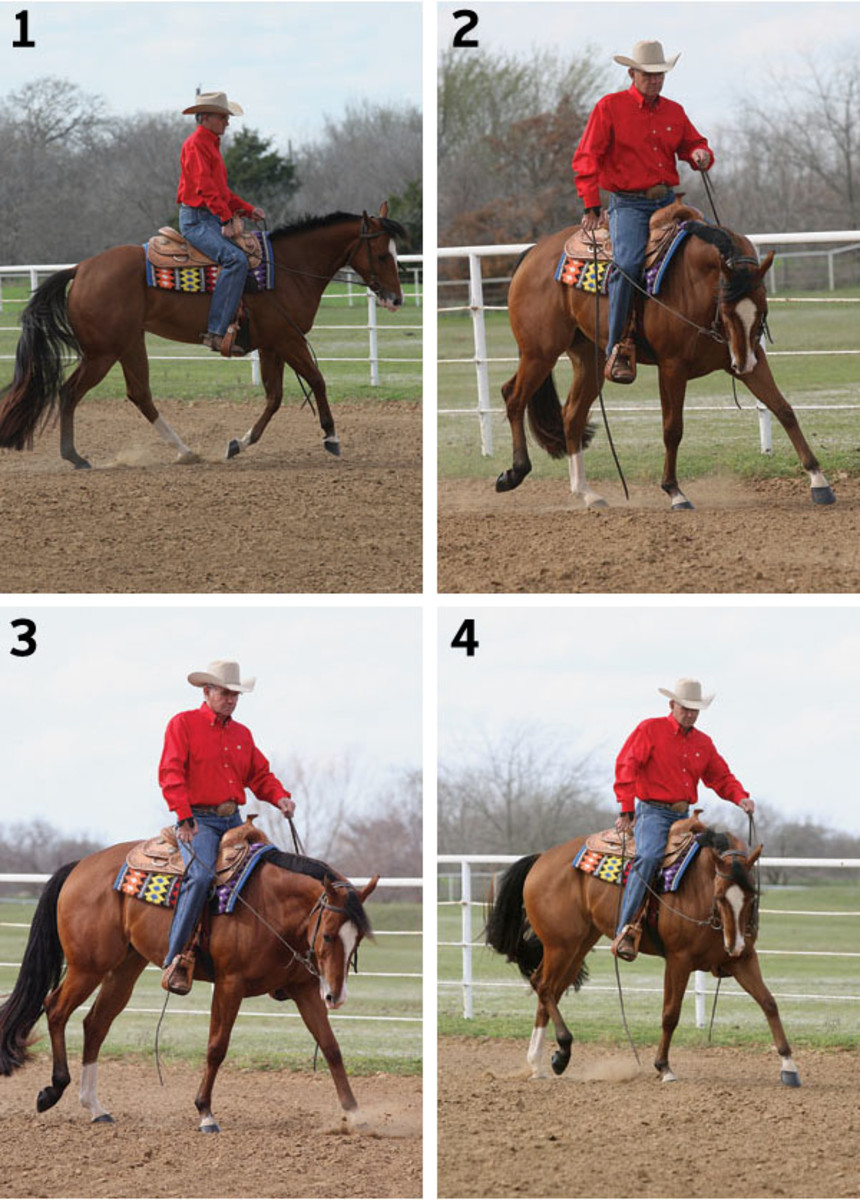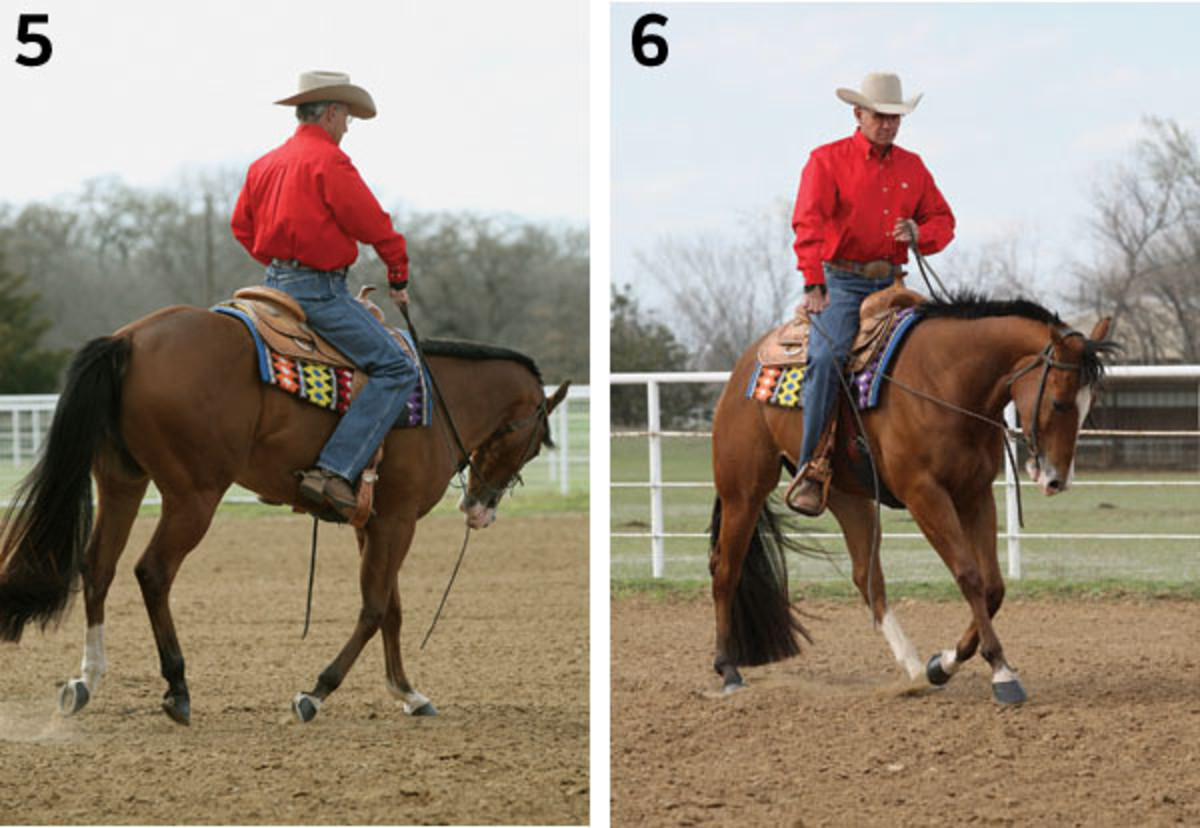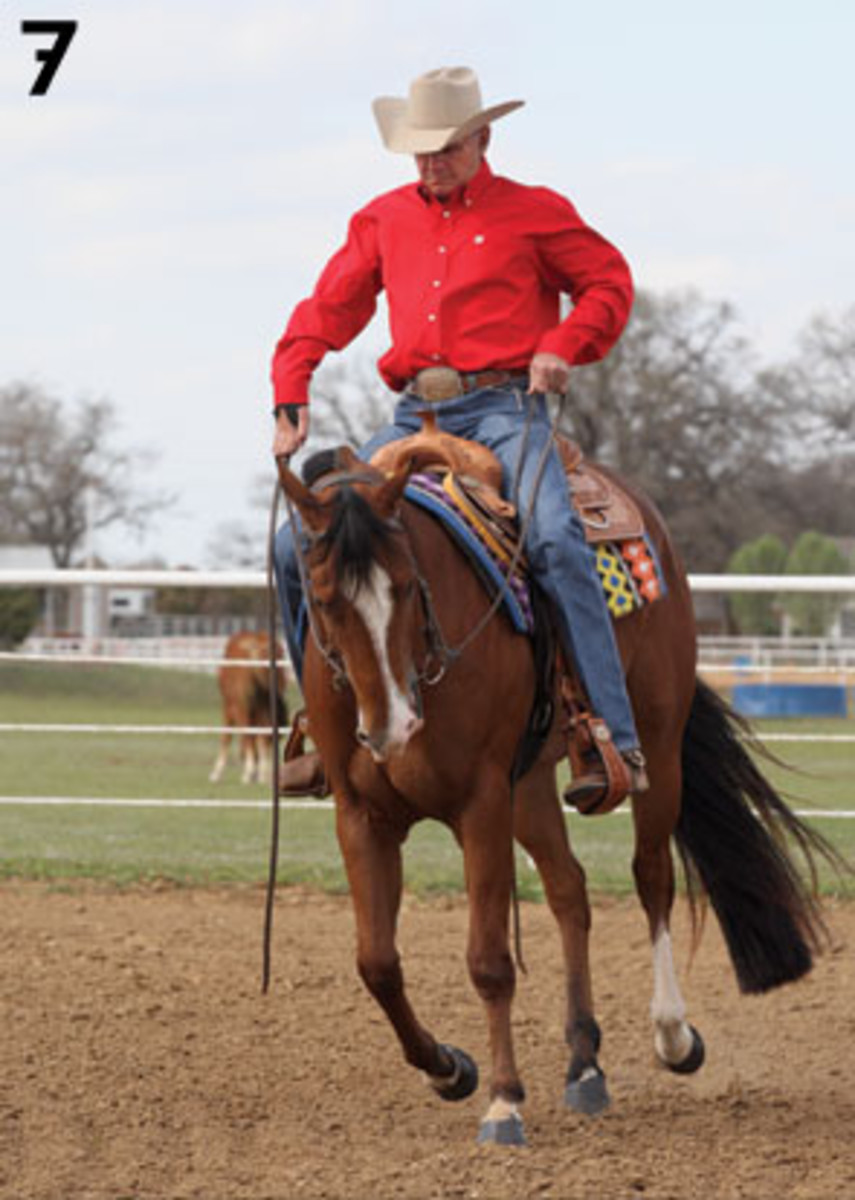Lesson Objective
If you compete: Use the counter canter to open your horse’s shoulders and hips, as well as increase the “hang time” and length of his stride. Furthermore, horsemanship patterns often call for counter leads to test your skill level.
If you don’t: Gain greater body control, improve collection, and achieve more roundness in your horse’s body for a more enjoyable ride.
You might think a counter canter is simply “loping on the wrong lead,” but that’s not correct. A horse on the incorrect lead isn’t necessarily collected, doesn’t engage his hindquarters, and pulls himself along his path of travel. A horse working on the counter lead keeps his hocks underneath himself, holds his shoulders up and square, and travels rhythmically, just as he would if he were loping on the proper lead for the arc he’s traveling.
Here I’ll discuss proper body position, for both you and your horse, when attempting a counter canter. I’ll break it down into opening the shoulder first, and then opening the hip. I’m working a circle to the right in this instance; be sure to perform the same exercises to the left, too. I recommend that you ride with a snaffle bit and two hands for easier body manipulation.
1. Lope off on a circle to the right on the left lead (the counter lead), working on a 60-foot circle. It might take extra cueing and support from you to keep your horse in his counter lead. If your horse wants to swap back to the correct lead, his body position isn’t correct, and he isn’t engaged enough. Use plenty of outside leg to create impulsion and forward motion. Ideally, work off the rail, and then go to the rail to allow your horse to relax once he’s performed the maneuver correctly.

2. Position is key in this exercise, and this image is a good illustration of what to strive for when opening your horse’s left shoulder. To do this, tip his nose to the inside with your inside rein. Support his outside shoulder with your outside rein, held slightly higher than your inside hand. Keep your inside leg on your horse, right about at the cinch.
3. In this position, your horse will shift his weight off his lead leg and onto his off legs, which means he’s freer to reach with that lead shoulder and leg. This increases your horse’s hang time, which is the duration the lead leg spends in the air, versus the time it spends on the ground.
4. Your shortened inside rein helps keep your horse’s shoulders upright while rocking his weight back onto his hocks, which means he’ll have greater impulsion from behind. You should feel your horse’s lead leg extend more, with your horse reaching with his toe. The objective is for the horse to take as big a stride as possible with the lead leg. When you feel this happen for a few correct strides, remove all pressure—take your legs off your horse’s sides and lower your hands.
5. Next, work on opening your horse’s hips to get greater drive from behind, achieve better collection, and demonstrate greater “split” between his hocks. Split refers to the distance the horse reaches underneath with his hind leg. When there’s greater split, your horse will round his back and is more collected.

6. Opening the hip requires largely the opposite rider position from opening the shoulder. Slightly tip your horse’s nose toward the lead leg (outside the circle) to push his shoulders into the circle. (Note: Some horses do better with their nose tipped inside the circle; try both ways to see which way your horse best reacts. Ask for an outside opinion if you can’t tell while horseback.) Place inside-leg pressure behind the cinch to slightly cant the inside hip to the outside of the circle. It’s important to note that prolonged exaggeration of the hip cant is problematic because it interferes with the horse’s balance and position. Over-canting changes a horse’s movement and rhythm for the worse, so be sure to balance all hip work with shoulder work to ensure that your horse remains balanced in his stride.
7. Work in this position, always balanced with exercises to keep the shoulders open, allows your horse to lift his back to achieve greater collection. When he willingly completes a few strides with his hips open in this position, release your rein and leg pressure to reward your horse’s correct response.

STEVE HECKAMAN. National Snaffle Bit Association Hall of Fame Rider Steve Heckaman trains world champion horses in Pilot Point, Texas.






